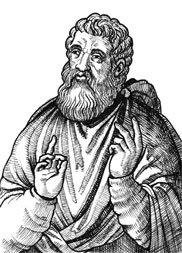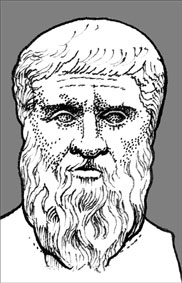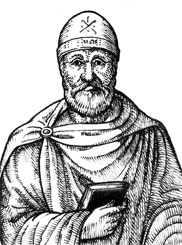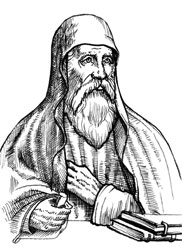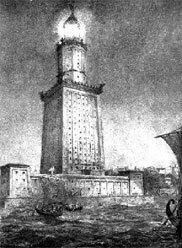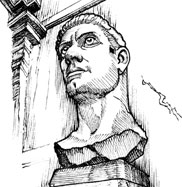Thursday 9-21-23 5th. Day Of The Weekly Cycle, Tishri 5 5784, 93rd. Summer Day
It has been said that those who do not learn from history are condemned to repeat it. To truly unlearn all that the trinity entails, one must examine how it developed—its history. This chapter covers the origin of the teaching spanning thousands of years, even before the time of Christ.
You will see that theologians rely on human reasoning because they completely dismiss crucial facts of history! The book is loaded with these facts, bringing quote after quote from respected, reliable historians.
Detail is presented so the reader will not miss the big picture—one that you will see to be fascinating. Many of these introductory quotes bring important background about what was happening in the New Testament Church. They are essential to understand first, before examining the period when the trinity gained acceptance. When put together, these facts are compelling.
It is vital to carefully examine these many sources for the message they contain. The trinity will be seen to have roots almost entirely in philosophy and abstract metaphysics. Remember from Chapter One that elements of this book will be difficult or impossible to understand—and that this is good. You will find yourself wondering how anyone could possibly believe that the trinity is scriptural!
Long before the Christian era, numerous variations of the three-fold god existed, and they were found in a host of pagan religions and mythologies. As with so many other pagan customs and practices that found their way into Christianity, the revival of this doctrine after Christ ascended to heaven was predictable. It was essential that followers be able to see Christianity in familiar terms. Offering pagans a three-in-one god became all-important to add believers—and gain power.
Triad deities (or three-in-one) first appeared in ancient Egypt soon after the Great Flood of Noah’s time—around 2300 BC. These deities came to be worshipped as Osiris, Isis and Horus.
Some facts of early history: After the destruction of the Tower of Babel, Nimrod and his wife-mother Semiramis, the first rulers of Babylon, fled to Egypt. Nimrod (known as Ninus or Athothis, among many other names) shared rulership with his father Cush (or Menes) in Egypt’s first dynasty. After Nimrod’s death, Semiramis claimed their son Horus was Nimrod reincarnated. These three—Osiris (Nimrod), Isis (Semiramis) and Horus (their son)—came to be exalted (Exploring Ancient History—The First 2500 Years, Schulz, ch. 11, 24).
In Babylon, these same three were known as Ninus, Ishtar and Tammuz. Over time, this triad became well-known in many nations. In ancient Rome, a triad of deities was worshipped—Jupiter, Juno and Minerva—and they bore similarities to the above-mentioned triads.
Virtually all ancient religions possessed triad deities. Notice this astonishing acknowledgment (emphasis ours throughout): “Though it is usual to speak of the Semitic tribes as monotheistic; yet it is an undoubted fact that more or less all over the world the deities are in triads. This rule applies to eastern and western hemispheres, to north and south. Further, it is observed that, in some mystical way, the triad of three persons is one…applied to the trinities of all heathen religions” (Egyptian Belief and Modern Thought, James Bonwick, p. 396).
An example of this is found in the ancient roots of Hinduism. After the 6th century BC, Hinduism featured the three-in-one god that became known as the Trimurti. The god Brahman consisted of (1) Brahma, the creator, (2) Vishnu, the preserver and (3) Shiva, the destroyer (What the Great Religions Believe, Joseph Gaer, p. 25).
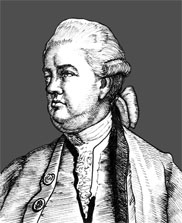
Historian Edward Gibbon
After the original apostles died, contradictions in teachings—meaning false doctrine—began to appear en masse, and Church history became lost. Famous historian Edward Gibbon, in The Decline and Fall of the Roman Empire, candidly acknowledged, “…The scanty and suspicious materials of ecclesiastical history seldom enable us to dispel the dark cloud that hangs over the first age of the church.”
For nearly a century after events in the book of Acts—about AD 70 to 170—we find Church history to be virtually blank. In The Story of the Christian Church, Jesse Lyman Hurlbut calls this time the “Age of Shadows.” He writes, “…Of all the periods in the [church’s] history, it is the one about which we know the least…For fifty years after St. Paul’s life a curtain hangs over the church, through which we strive vainly to look; and when at last it rises, about 120 AD with the writings of the earliest church fathers, we find a church in many aspects very different from that in the days of St. Peter and St. Paul.”
The New Testament offers many verses proving an apostasy was occurring, pulling believers from the truth. Notice the many warnings about false apostles and a false movement that already existed in the first century and was threatening the Church:
II Thessalonians 2:7: “For the mystery of iniquity does already work…”
II Corinthians 11:13-15: “For such are false apostles, deceitful workers, transforming themselves into the apostles of Christ. And no marvel; for Satan himself is transformed into an angel of light. Therefore it is no great thing if his ministers also be transformed as the ministers of righteousness; whose end shall be according to their works.”
I John 4:1: “Beloved, believe not every spirit, but try the spirits whether they are of God: because many false prophets are gone out into the world.”
Jude 3: “Beloved, when I gave all diligence to write unto you of the common salvation, it was needful for me to write unto you, and exhort you that you should earnestly contend for the faith which was once delivered unto the saints.”
At the end of his life, the apostle John returned from exile and confronted this growing apostasy (falling away from truth) in the AD 90s. False leaders had gained control over congregations of the true Church in Asia Minor. Here is one account of the controversy:
“I wrote unto the church: but Diotrephes, who loves to have the preeminence among them, received us not. Wherefore, if I come, I will remember his deeds which he did, prating against us with malicious words: and not content therewith, neither does he himself receive the brethren, and forbids them that would, and casts them out of the church” (III John 9-10).
Such occurrences must have been repeated many times in many congregations late in John’s life. And they continued during the ministry of Polycarp, John’s successor.
To be continued
It has been said that those who do not learn from history are condemned to repeat it. To truly unlearn all that the trinity entails, one must examine how it developed—its history. This chapter covers the origin of the teaching spanning thousands of years, even before the time of Christ.
You will see that theologians rely on human reasoning because they completely dismiss crucial facts of history! The book is loaded with these facts, bringing quote after quote from respected, reliable historians.
Detail is presented so the reader will not miss the big picture—one that you will see to be fascinating. Many of these introductory quotes bring important background about what was happening in the New Testament Church. They are essential to understand first, before examining the period when the trinity gained acceptance. When put together, these facts are compelling.
It is vital to carefully examine these many sources for the message they contain. The trinity will be seen to have roots almost entirely in philosophy and abstract metaphysics. Remember from Chapter One that elements of this book will be difficult or impossible to understand—and that this is good. You will find yourself wondering how anyone could possibly believe that the trinity is scriptural!
Long before the Christian era, numerous variations of the three-fold god existed, and they were found in a host of pagan religions and mythologies. As with so many other pagan customs and practices that found their way into Christianity, the revival of this doctrine after Christ ascended to heaven was predictable. It was essential that followers be able to see Christianity in familiar terms. Offering pagans a three-in-one god became all-important to add believers—and gain power.
Triad deities (or three-in-one) first appeared in ancient Egypt soon after the Great Flood of Noah’s time—around 2300 BC. These deities came to be worshipped as Osiris, Isis and Horus.
Some facts of early history: After the destruction of the Tower of Babel, Nimrod and his wife-mother Semiramis, the first rulers of Babylon, fled to Egypt. Nimrod (known as Ninus or Athothis, among many other names) shared rulership with his father Cush (or Menes) in Egypt’s first dynasty. After Nimrod’s death, Semiramis claimed their son Horus was Nimrod reincarnated. These three—Osiris (Nimrod), Isis (Semiramis) and Horus (their son)—came to be exalted (Exploring Ancient History—The First 2500 Years, Schulz, ch. 11, 24).
In Babylon, these same three were known as Ninus, Ishtar and Tammuz. Over time, this triad became well-known in many nations. In ancient Rome, a triad of deities was worshipped—Jupiter, Juno and Minerva—and they bore similarities to the above-mentioned triads.
Virtually all ancient religions possessed triad deities. Notice this astonishing acknowledgment (emphasis ours throughout): “Though it is usual to speak of the Semitic tribes as monotheistic; yet it is an undoubted fact that more or less all over the world the deities are in triads. This rule applies to eastern and western hemispheres, to north and south. Further, it is observed that, in some mystical way, the triad of three persons is one…applied to the trinities of all heathen religions” (Egyptian Belief and Modern Thought, James Bonwick, p. 396).
An example of this is found in the ancient roots of Hinduism. After the 6th century BC, Hinduism featured the three-in-one god that became known as the Trimurti. The god Brahman consisted of (1) Brahma, the creator, (2) Vishnu, the preserver and (3) Shiva, the destroyer (What the Great Religions Believe, Joseph Gaer, p. 25).
Orthodox Christianity vs. Apostolic Christianity
But how did the trinity develop within mainstream Christianity? Why were so many followers receptive to the very same schools of philosophy that had been rejected by the faithful first-century Christians?
Historian Edward Gibbon
After the original apostles died, contradictions in teachings—meaning false doctrine—began to appear en masse, and Church history became lost. Famous historian Edward Gibbon, in The Decline and Fall of the Roman Empire, candidly acknowledged, “…The scanty and suspicious materials of ecclesiastical history seldom enable us to dispel the dark cloud that hangs over the first age of the church.”
For nearly a century after events in the book of Acts—about AD 70 to 170—we find Church history to be virtually blank. In The Story of the Christian Church, Jesse Lyman Hurlbut calls this time the “Age of Shadows.” He writes, “…Of all the periods in the [church’s] history, it is the one about which we know the least…For fifty years after St. Paul’s life a curtain hangs over the church, through which we strive vainly to look; and when at last it rises, about 120 AD with the writings of the earliest church fathers, we find a church in many aspects very different from that in the days of St. Peter and St. Paul.”
The New Testament offers many verses proving an apostasy was occurring, pulling believers from the truth. Notice the many warnings about false apostles and a false movement that already existed in the first century and was threatening the Church:
II Thessalonians 2:7: “For the mystery of iniquity does already work…”
II Corinthians 11:13-15: “For such are false apostles, deceitful workers, transforming themselves into the apostles of Christ. And no marvel; for Satan himself is transformed into an angel of light. Therefore it is no great thing if his ministers also be transformed as the ministers of righteousness; whose end shall be according to their works.”
I John 4:1: “Beloved, believe not every spirit, but try the spirits whether they are of God: because many false prophets are gone out into the world.”
Jude 3: “Beloved, when I gave all diligence to write unto you of the common salvation, it was needful for me to write unto you, and exhort you that you should earnestly contend for the faith which was once delivered unto the saints.”
At the end of his life, the apostle John returned from exile and confronted this growing apostasy (falling away from truth) in the AD 90s. False leaders had gained control over congregations of the true Church in Asia Minor. Here is one account of the controversy:
“I wrote unto the church: but Diotrephes, who loves to have the preeminence among them, received us not. Wherefore, if I come, I will remember his deeds which he did, prating against us with malicious words: and not content therewith, neither does he himself receive the brethren, and forbids them that would, and casts them out of the church” (III John 9-10).
Such occurrences must have been repeated many times in many congregations late in John’s life. And they continued during the ministry of Polycarp, John’s successor.
To be continued






